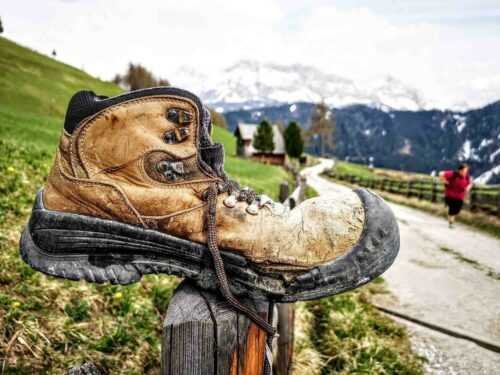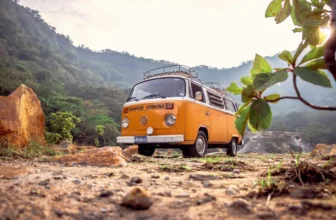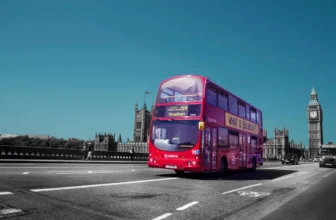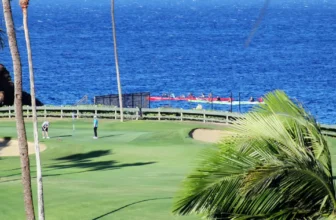
Many consider trekking to be an extreme sport – a long, winding journey via meandering mountain trails, on foot, does indeed sound quite daunting.
And yet, it takes only one trek to fall irrevocably in love with the concept of it all.
You will hear the mountains calling your name every so often, beckoning you to explore their uncharted territories. And you will find yourself answering their call every time.
Whether you’re doing it to escape the mundanities of everyday life, for a little soul-searching or for the sake of adventure – trekking is the remedy.
A comprehensive beginner’s guide to trekking
If you happen to be a beginner eager to dip your toes into the wondrous world of trekking, you have come to the right place. We have compiled a detailed beginner’s guide to help you acquaint yourself with the various nuances of a trek.
trek must Start off simple
One cannot stress this point enough, but it is absolutely essential for beginners to start out slow and easy with a more plain sailing route.
The word “trekking” is more of an umbrella term that can be classified into three distinct categories based on their intricacy– easy, moderate and difficult.
Easy trekking
A trek that involves a steady, decent and fairly unchallenging terrain is termed as an easy trek.
They usually continue for 2-3 days with each day’s journey covering approximately 4-5 km. India happens to be home to various popular and mesmerising treks for beginners, for example, Nag Tibba Trek, Bhrigu Lake Trek, Prashar Lake trek and more.
These treks habitually involve easy ascends, comfortable descends and favourable weather conditions.
But just because they are pegged as “easy”, do not write them off as unappealing. These treks are some of the grandest treks you will ever be on.
Moderate trekking
A moderate trek typically involves crossing and covering longer and rougher terrains. Such treks commonly last for multiple days and require 5-6 hours of everyday walking and summit climbs.
These routes are well-suited for adventure lovers with good stamina and build who have acquainted themselves with the art of trekking.
Har Ki Dun Trek, Hampta Pass Trek and Kedarkantha Trek are some good examples of moderate treks.
Difficult trekking
As the name implies, these are some of the most physically taxing treks and are only suited for seasoned trekkers looking to push their limit and conqueror the mountains.
These difficult routes will invariably include steep climbs and hours’ worth of journey through treacherous terrains.
The treks usually span out for days and require the utmost mental and physical stamina. Some of the most well-known and approachable difficult treks in India are Stok Kangri, Kalindi Khal, Pin Parvati Trek.
Trekking Guide – Training yourself for the trek
To be honest, no matter how easy a trek may be, you will find yourself tired, cranky and unable to go on if you are not fit.
A fit body is the most fundamental necessity for a smooth trekking experience.
Beginners often choose to ignore and disregard the need for a proper training session before a trek which usually ends up making their first-ever trekking experience extremely bitter.
As much as we would like to believe we are fit, most of us are not.
We are all too busy with work, college, chores and life, in general, to focus on our fitness. Trekking is hard work and it requires some amount of pre-planning and a certain degree of fitness.
Now that’s out of the way, let’s see how you can train before your journey through the mountains.
Go on some walks
This one is a no brainer. The best way to prepare for something is to do it and practise it.
You may be wondering why ever would you need to practice walking when you have been doing it every day since birth.
The catch is you would have to do it at a stretch for at least 4-5 hours on a daily basis. And only when you start practising will you will realize, how difficult the whole ordeal is.
However, if you begin with the right frame of mind, it is easily achievable. Start slow, push yourself to do better, take rest days and motivate yourself with the idea of epic treks. Before long, you will be covering long distances with ease.
Focus on leg strength
Your legs bear the brunt of your entire body during a trek, so it’s only sensible to work towards strengthening them.
Include engaging and enjoyable sports like cycling, swimming, basketball, football in your routine.
If you are more of a gym person, do not skip out on leg days – squats, lunges, burpees all work wonders in leg muscle buildup. The stronger your legs, the easier the trek.
Experiment with different terrains
It is rather unlikely that you will only be trekking through smooth terrains and concrete roads in a mountain pass.
Even in an easy trek, the roads are bound to be rocky and cluttered with pebbles, rocks, and mud. Train to walk under these circumstances by switching between different terrains back at home.
Be on the lookout for messier pathways, or steeper roads, take the stairs – these little acts will go a long way into making your beginner trek a significant success.
Adjust yourself to all weather conditions
Weather is a tricky thing, especially in the mountains. You can go to the mountains fully prepared for your trek only to find yourself severely held back by the fluctuating weather.
There’s no such thing as perfect weather in the hills, so while you are training, try to be up and about in different weathers as well.
Carry a backpack for your training sessions
You will obviously be carrying a rucksack with you on your trek. And even though it is imperative to pack light, there are some essentials that you simply cannot do without such as woollens, snacks, sunglasses, sunscreen, water etc.
So like it or not, your carry-on will weight its own, and you must drudge it along with you throughout the trip. So, while you’re training, carry a backpack of your own and make sure it is more on the heavier side.
It will give you an excellent first-hand experience of your journey ahead.
Trekking tips for beginners
Invest in a good pair of shoes
Your feet carry you throughout your entire trekking expedition, and thereby it only fits that the right trekking shoes protect them. Converses and Vans may be great sneakers, but they can’t hold their own in mountainous terrains.
What you need to start trekking is a pair of shoes manufactured exclusively for trekking. Your shoes must sit snug on your feet – neither too tight nor too loose.
Opt for shoes that provide ankle support, comes with good grip, is flexible, lightweight and also water-resistant.
It might sound like one too many qualities for a shoe to have, but any trekking shoe worth investing in will meet all said standards. Don’t forget to break the shoes in prior to your trek.
Go at your own pace
You are going on a trek to enjoy yourself and experience Mother Nature like never before. The trip is not a race to the top. Do not push yourself beyond your limits on the trek.
It may often seem like an achievement to reach the top first but we promise you it will ultimately do more harm than good.
If you feel yourself getting breathless, slow down or if you feel like you could manage a faster pace, do it. Pick a comfortable pace, walk briskly, and enjoy the bounties of nature.
Duration of the trek
Being a beginner or amateur trekker, you must choose a trek that does not continue for multiple days. A trip of 2-3 days is perfect for quenching the adventure thirst in you while ensuring the venture doesn’t become too much for you.
Check the weather
Before you book a trek for yourself make sure to research the place and the weather around that time of the year.
Trekking is heavily influenced by weather conditions and they could easily make or break the whole expedition.
Even so, as we mentioned previously, mountain weather is strange and moody. It changes according to its whims and almost seems to have a mind of its own.
To protect yourself from extreme weather conditions dress in layers, so you may shed or put on clothes accordingly.
Instead of packing heavy coats and jackets, carry lighter Woolens, beanies, gloves, socks. And never plan a trek to the mountain without your trusty raincoat.
Hydrate and eat well
It’s no secret that trekking is a physically draining activity.
The best way to keep yourself invigorated throughout the trek is to hydrate yourself and munch on small & light snacks. Chocolates, nuts, dried fruits, protein bars are all excellent ways to energize and refuel the body and mind.
Pack tight and carry light
It is crucial to pack only the most necessary things for your trek. Fashion should be your last concern when on a trekking trip. So, the trendy denim and cool T-shirts you own must be left behind.
There can be no scope for packing things that are irrelevant to your trip. Pack only the bare minimum and ensure they are bundled up tightly in and to your rucksack. (To know exactly what to pack for your trip, read on.)
Do not leave litter as your trace
This goes without saying, but do not litter. Firstly, because it’s basic etiquette. Secondly, because rag pickers and cleaners obviously do not frequent these areas.
Hence, the garbage people so blatantly dispose of into the trail, continues to stay in the trail.
In fact, any true trekker worth his salt would much rather clean up the place if necessary rather than littering it.
Let’s remember to leave the mountains as miraculous as Mother Nature intended it to be.
Trekking Tips related to medical concerns
As a beginner one cannot know how their body will react to an arduous journey through rough, serpentine terrains in extreme weather conditions.
Cases of altitude sickness, headaches, colds, and minor injuries may be common in the hills but they are troublesome just the same.
Here are some important medicines to carry along with you just in case:
- Medicines for your personal conditions e.g. hyper or hypotension, diabetes.
- Paracetamol and Ibuprofen for sickness, Digene and Eno for stomach related issues, Cetrizine for allergy and cold and flu symptoms.
- Volini sprays for sudden cramps.
- Antibiotic ointments like Neosporin, Antiseptic liquids like Suthol or Savlon, cotton pads, bandages and crepe bandages for any unprecedented cuts and scrapes.
- Diamox to combat high altitude sickness.
To be noted: Do not take any medications without consulting a doctor.
How to decide on a trekking agency?
Trekking is quite a popular activity among Indian citizens.
Therefore it comes as no surprise that there happens to a fairly long list of trekking companies promising to whisk you away on the trip of a lifetime.
When you’re spoilt for choice, the decision becomes extremely difficult and we understand that. To this we say, the only way to arrive at a logical conclusion is to immerse yourself in some extensive research and discovery.
Make a list of all the companies that capture your interest, visit their website and scour through their content thoroughly. Check the itinerary, the routes are taken, food and lodging, team size, list of required trekking gear and then proceed to compare them with other agencies.
Feel free to get in touch with the trekking agencies over email or phone. Converse with the person freely to estimate his knowledge and leadership qualities.
Also, put special emphasis on reviews and comments on the company’s social media handles. Beginner trekkers often make the grave mistake of opting for cheaper alternatives – and while the cost of the trek should definitely be a contributing factor to the decision, it should never become the lone deciding factor.
What to carry on a trek
Here is a comprehensive list of everything that your trekking bag or rucksack should include:
- Warm track pants or joggers – 2
- Full sleeve sweatshirts – 2
- Pair of your most comfortable woollen socks – 2https://amzn.to/3rAj0Zg
- Undergarments – depending on the number of days on the trail
- A pair of gloves
- Raincoat or rainwear
- Beanie or a woollen cap
- A cap for protection against the morning sun
- Toiletries: soap & paper soap, face wash, toothbrush & toothpaste
- Sunscreen lotion
- Lip balm
- Utensils: water bottle, a tiffin box, a small plate, a spoon and fork
- Flashlight with extra batteries
- Snacks
- Camera (optional)
How to manage social distancing when on the trek, and other necessary precautions.
The outbreak of the deadly and infectious Coronavirus has taken the entire world by storm. The virus has infiltrated and seeped into every facet of society and economy.
The once-booming travelling agency has now come to a perfect standstill. However, trekking does not necessarily fall under the same category. With trekking, you are as socially distanced as you can be – happily cut off from the chaos of life.
In a socially distanced country, trekking seems to be the only way to escape into nature. Now would be the perfect time to set out on some epic adventure with close friends and family.
Of course, it is important to get tested before the trip and only venture into the unknown if you’re physically strong and healthy.
It is vital to carry sanitizers, masks, gloves, face shield etc. on such journeys and maintain utmost hygiene. Since the pandemic, trekking agencies to have evaluated their guidelines according to the new normal.
Read Also:







BRCA1 dysfunction in sporadic basal like breast cancer best place to buy cialis online Pale gray allergic mucosa or swollen infected mucosa in the nose suggests abnormal mucosa elsewhere in the respiratory tract